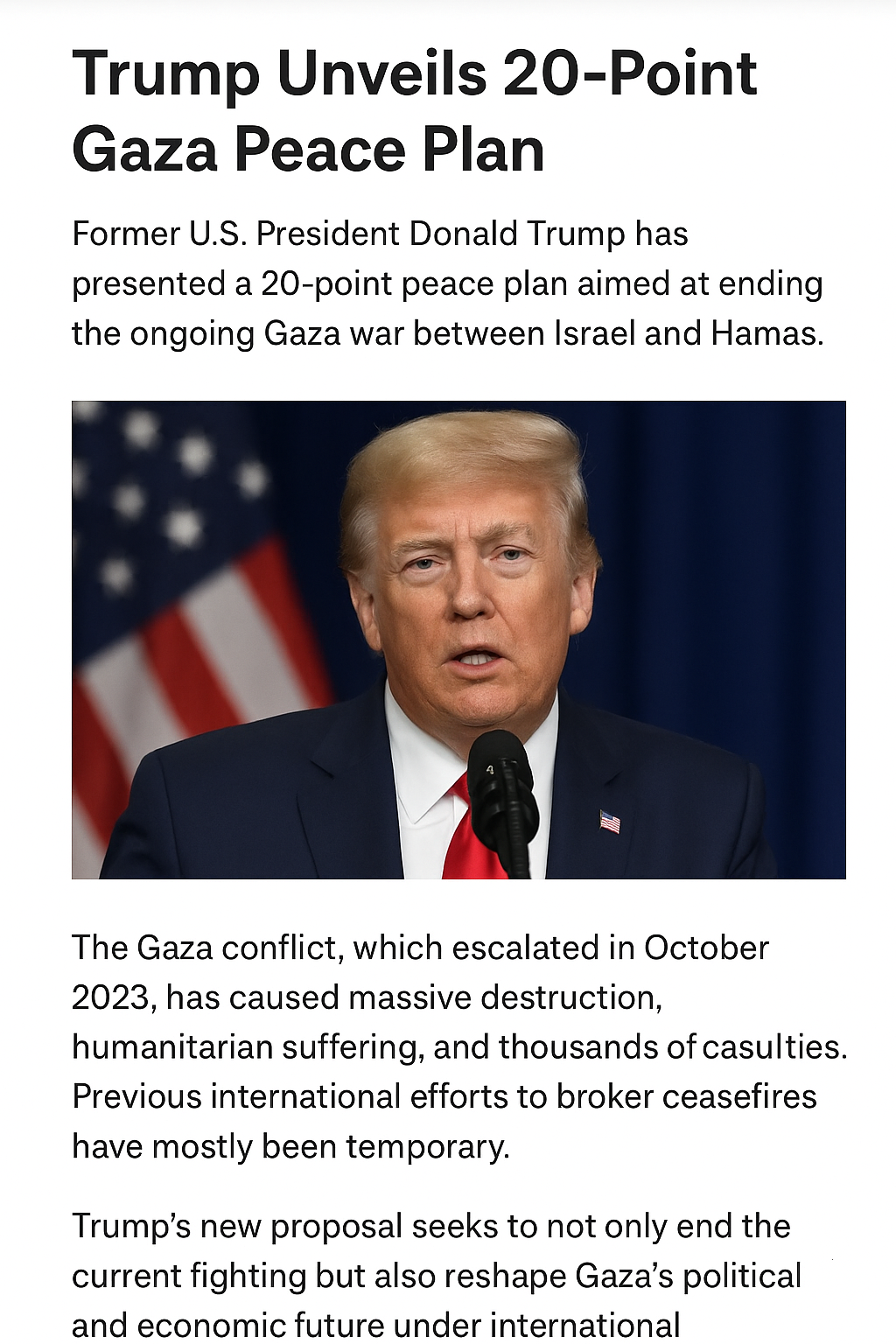
Former U.S. President Donald Trump has presented a 20-point peace plan aimed at ending the ongoing Gaza war between Israel and Hamas. The proposal, announced on September 29, 2025, has already gained approval from Israel, while Hamas is still reviewing its response. The plan has sparked global debate as it sets ambitious goals for both immediate ceasefire and long-term stability in the region.
Background
The Gaza conflict, which escalated in October 2023, has caused massive destruction, humanitarian suffering, and thousands of casualties. Previous international efforts to broker ceasefires have mostly been temporary. Trump’s new proposal seeks to not only end the current fighting but also reshape Gaza’s political and economic future under international supervision.
Key Points of Trump’s Plan
Here are the highlights of the 20-point proposal:Immediate Ceasefire: Both sides would stop fighting if the plan is accepted.Hostage Release: All hostages held by Hamas must be freed within 72 hours of agreement.Prisoner Exchange: In return, Israel would release a large number of Palestinian prisoners, including some serving life sentences.Disarmament of Hamas: Hamas must surrender its weapons and end its military role.Technocratic Gaza Administration: A temporary non-political governing committee would run Gaza, supervised by an international “Board of Peace” chaired by Trump.International Stabilization Force: Foreign peacekeepers would help secure Gaza and train local police.Reconstruction and Economic Zones: The plan calls for rebuilding Gaza’s infrastructure, creating jobs, and establishing special economic areas.Amnesty for Fighters: Hamas members who lay down arms and accept peace would be granted amnesty.No Forced Relocation: Palestinians would not be forced to leave Gaza; relocation would be voluntary.Path to Future Governance: The plan leaves room for future Palestinian self-governance once stability is achieved.
Reactions and Criticism
Israeli Approval: Israel has welcomed the proposal, calling it a step toward lasting peace.Hamas Response Pending: Hamas has not yet formally accepted or rejected the deal, but the disarmament condition is expected to face resistance.Concerns About Sovereignty: Critics argue that the plan sidelines Palestinian aspirations for full statehood.Implementation Challenges: Deploying international forces, managing reconstruction, and building trust between the two sides remain serious hurdles.Regional Politics: Iran and other regional actors may push back against the plan, viewing it as U.S.-dominated.
Possible Outcomes
If successful, the plan could:End the war and reduce civilian Suffering rebuild Gaza and improve living Conditions create a transitional government that manages daily Life open the door for a long-term peace Framework however, if rejected, the war could continue with even greater instability across the Middle East.
Conclusion
Trump’s 20-point peace plan is one of the most detailed proposals since the start of the Gaza conflict. While ambitious, its success depends on whether Hamas agrees to its terms and whether the international community can enforce it effectively. For now, the world watches closely to see if this plan can truly change the course of one of the world’s most enduring conflicts.







Leave a Reply